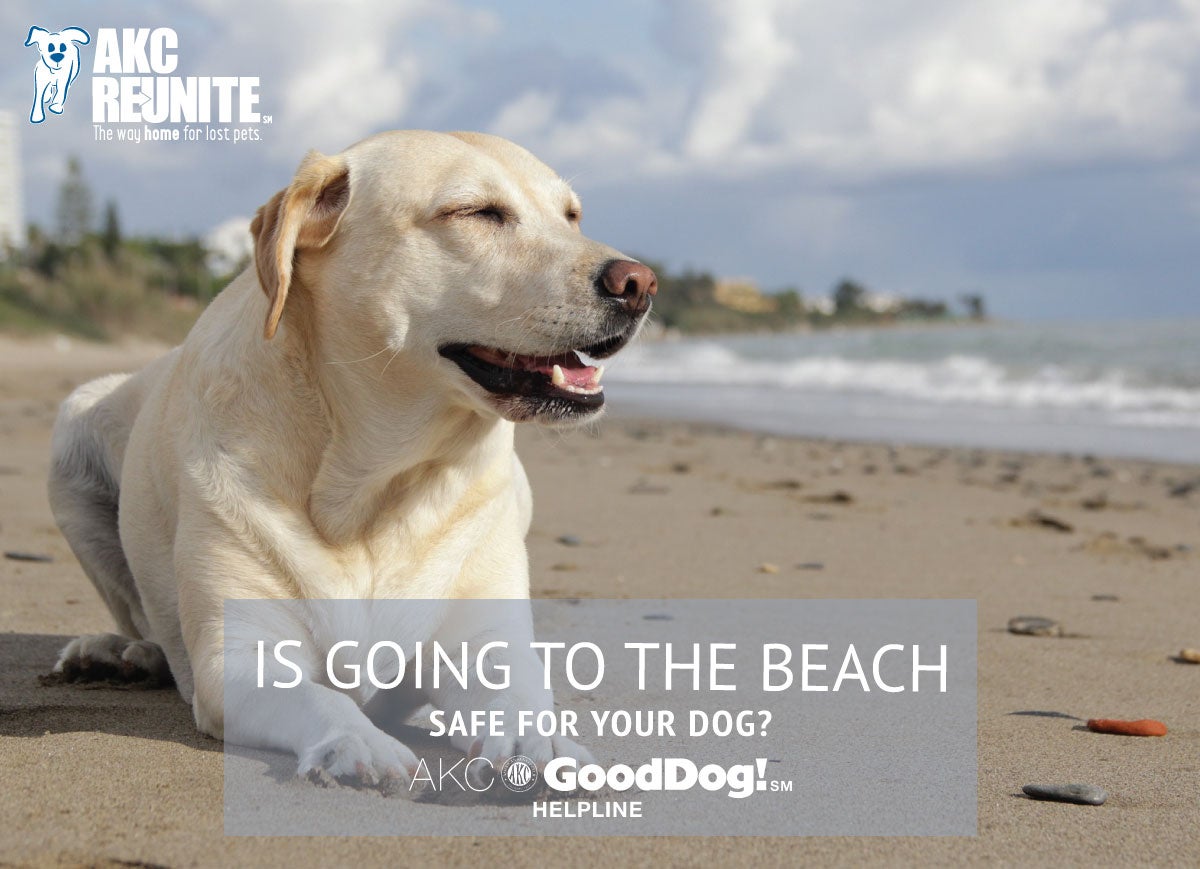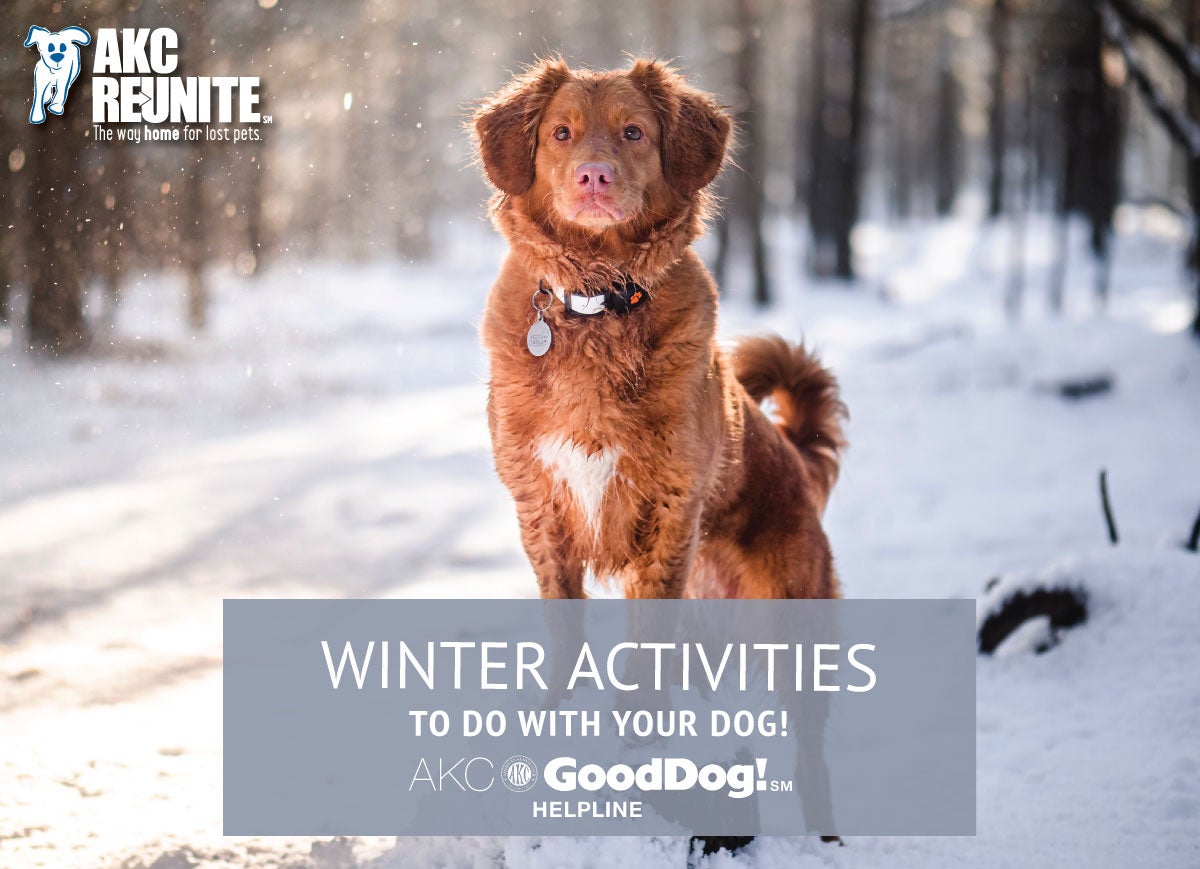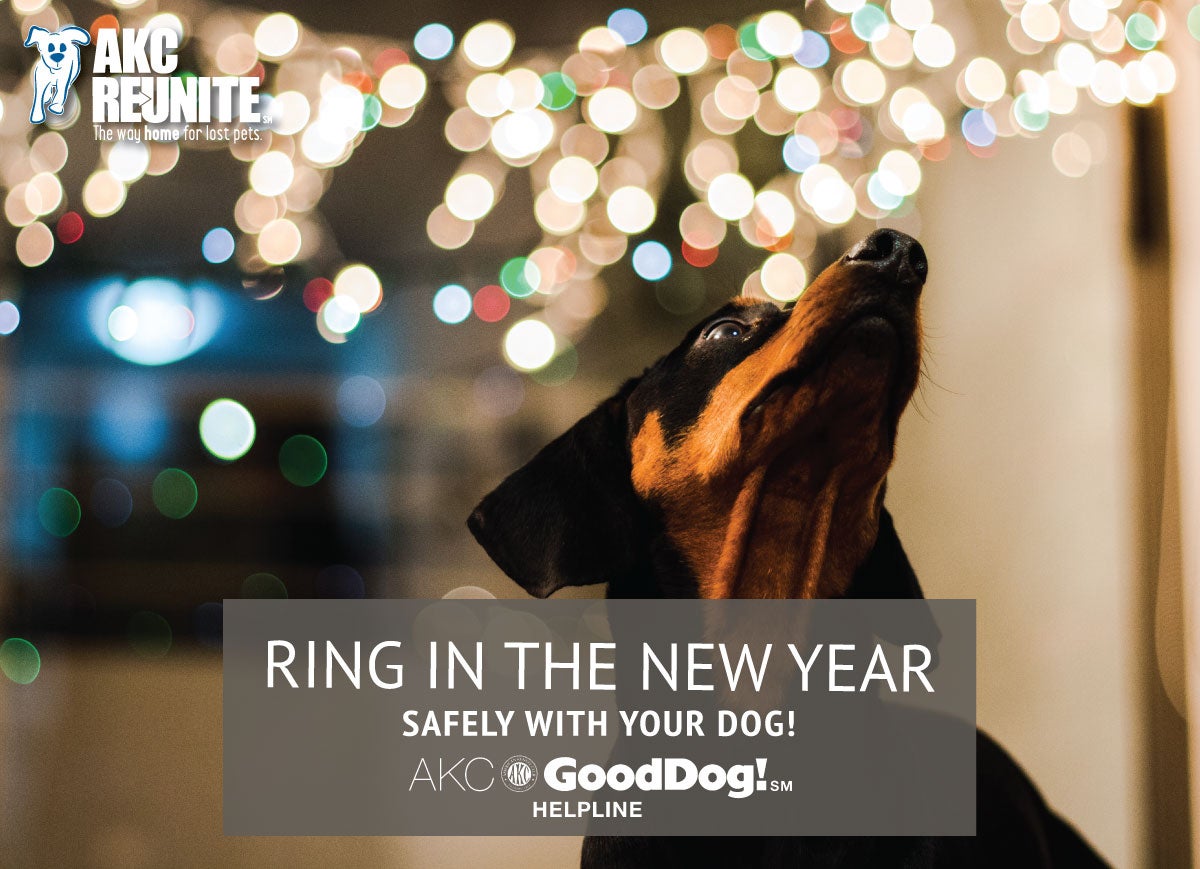Is Going to the Beach Safe for Your Dog?
Brought to you by the AKC GoodDog! Helpline – the AKC’s 7-day-a-week training support service
By Hilarie Erb, AKC GoodDog! Helpline Trainer
A week at the beach is almost everybody’s idea of a perfect vacation – it’s obvious by the crowds of people at every beach during the summer months. But what about taking the dog? It can be fun to have your best friend share your vacation, but it takes planning.
Don’t assume that dogs are welcome. Many beaches do not allow dogs. Others do, but only at specific times of the day, and there are designated “dog beaches” where dogs are always welcome. Learn what the rules are, specifically confirm whether dogs are allowed on the beach, the dates of your trip, and at what times of day. Also, be sure to pay attention to the beach’s leash requirements. Finding out that dogs are not welcome once you’ve arrived would throw a big kink into your vacation plans. And of course, if you are renting a vacation home or staying in a hotel, verify that it is dog friendly. You will need a comfortable, air-conditioned place when a break from the sun is needed.
In most places, the weather at the beach is too hot for dogs to spend much time there, at least during the day. Early morning and evening are the best times, just as it is at home during the summer. Hot sand can burn dogs’ paws, and the bright sun can overheat them in a hurry. It’s usually windy at the beach, and sand can get blown into dogs’ eyes. Ingesting a little bit of saltwater while playing fetch might not cause harm but consuming a large amount can be fatal to a dog.
Only use sunscreen that is specifically formulated for dogs. Those meant for humans can be toxic to dogs; be sure that your dog does not get into any of your sunscreen or lick it off human skin.
Always bring lots of fresh water for your dog and provide shade. These are critical anytime you leave home during the summer with your dog but especially so if you plan to spend time outdoors at the beach.
- Protecting him against sunburn. Dogs, especially those with short hair, white fur, and pink skin, can get sunburned. Limit your dog’s exposure during the day and apply dog-friendly sunscreen to his ears, nose, and coat before going outside. Many sun protection products meant for humans can be toxic — so it is important to not let your dog lick sunscreen off human skin, too.
- Checking the water conditions. Dogs are easy targets for sea lice and jellyfish. Also be mindful of strong undercurrents or riptides.
- Keep your dog’s activity in-check. Running in the heat and on the sand is strenuous exercise and can cause heatstroke or make your dog’s paw pads blister. If your dog is out of shape, it is at risk of pulling a tendon or ligament in these conditions, too.
- Don’t let your dog drink seawater. The salt will make him sick.
- Rinse him off at the end of the day. Salt and other minerals in ocean water can damage your dog’s coat. And you don’t want your dog to track sand back into your house or hotel!
Finally, since you will be in a new environment, the change in routine may make your pet nervous. Make sure your contact information is up-to-date with AKC Reunite, just in case your dog tries to escape or explore the new, unknown area.
For more tips and advice on training your dog, join the AKC GoodDog! Helpline, a seven-day-a-week telephone support service staffed by experienced dog trainers: www.akcgooddoghelpline.org.
RELATED POSTS
Basic Training Cues Your Dog Will Love
A good relationship with your puppy doesn’t just happen overnight, but it’s easy to build one with simple cues and positive reinforcement training!
Winter Activities to do with your Dog!
Unless you live in a year-round mild climate, you and your dog can get stir-crazy during cold, snowy, or wet winter weather conditions. That's why we've compiled a list of winter activities you can do with your best friend!
Ring in a Happy and Safe New Year with your Dog
Start the new year off with a celebration and some resolutions that will make the party — and the coming year — safe for your dog!





